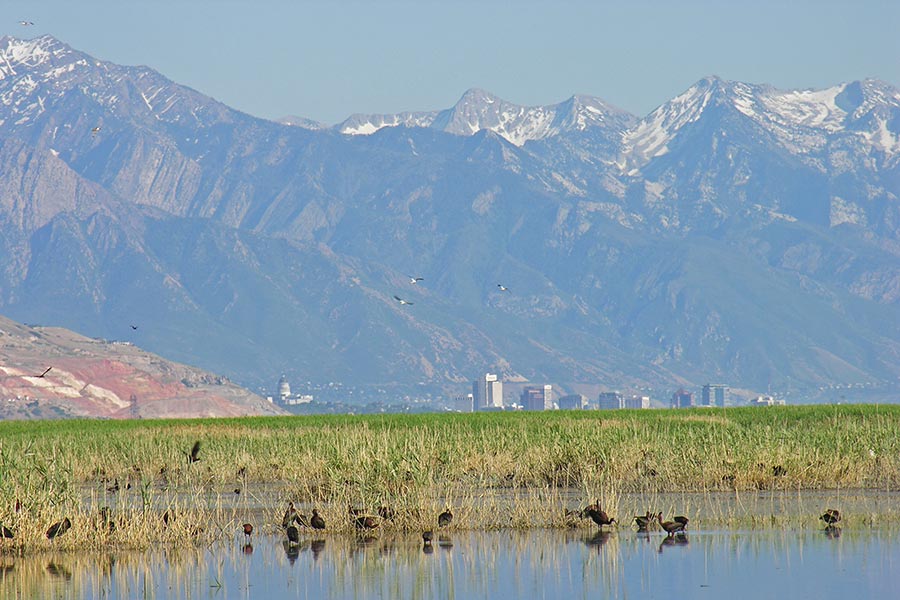≡
Fun facts
Here's some trivia about the Great Salt Lake
- The Great Salt Lake is the eighth largest terminal lake in the world.
- In 1987, a Chilean flamingo escaped from Tracy Aviary in Salt Lake City, made his way to the Great Salt Lake, and has likely lived there ever since. Named "Pink Floyd," he was last spotted in 2005.
- The North Arm of the Great Salt Lake is so salty that only two known types of bacteria can live in it—halobacterium and halococcus, which are extreme salt-lovers (halophiles). There are from 1,000,000 to 100,000,000 bacteria per milliliter in the North Arm, and these bacteria have the unique pigment that gives the water its purple or red hue.
- Swimming in the lake is popular, as the water is considered highly curative. Some companies have even sold bottled lakewater to drink for good health.
- There are dozens of freshwater streams on Antelope Island.
- You can hike, bike, ride horses, swim, hunt, birdwatch and boat on and around the Great Salt Lake.
- You probably eat salt from the lake every day! One of Morton Salt's biggest plants is near Salt Lake City.
- Brine shrimp, at a certain life stage, are used as feed for table shrimp. So, the next time you order a shrimp cocktail, you just might be eating brine shrimp from the lake, too!
- The lake's South Arm is three to five times saltier than the ocean. The North Arm is nearly ten times saltier.
- The Great Salt Lake boasts some of the world's largest populations of birds! The area is a regionally, nationally and hemispherically important ecosystem for migratory birds.
- No fish can survive in the North or South arms of the lake. The largest aquatic animals in the lake are brine shrimp and brine fly larvae! There are larger invertebrates and some fish in the Farmington and Bear River Bays.
- Brine fly larvae have been known to reach numbers of 370 million per mile of shoreline in the summer. Luckily, they don't bite! (If you do get bitten out there, it's more likely the gnats or no-see-ums.)
- The first North American transcontinental railroad was finished at Promontory Summit, just north of the lake, in 1869. The actual spot where the final, golden spike was laid is now the Golden Spike National Historic Site. Thirty-five years later, a more direct route was built that cut through the lake and crossed Promontory Point, located on the southern tip of the Promontory Mountain peninsula.
- Lake Bonneville, the Great Salt Lake's predecessor over 12,000 years ago, was up to 1,000 feet deep and covered about one quarter of the state of Utah, as well as parts of Idaho and Nevada.
- Up to five million eared grebes (50–99% of the species' entire population) have been known to visit the lake at one time!
- The lake is home to one of the largest breeding colonies of American white pelicans in the world. They breed in large numbers on Gunnison Island.
- The Great Salt Lake contributes 5–8% of Utah's snowpack from its "lake effect."







